Search Results

Greysun
Hi! My name is Greysun! I was diagnosed with acute myeloid leukemia (AML) on March 23, 2011. I was fortunate to get outstanding medical treatment at UNC Children's Hospital and the cancer center. I have been through many rounds of chemo followed by up to six weeks of hospitalization after each one. I have had radiation to my brain followed up by my first bone marrow transplant.

Shaun
I endured poor-prognosis acute myeloid leukemia (AML), multiple rounds of brutal chemotherapy, a bone marrow transplant, and an open heart surgery - all for only a small chance of survival. The journey since has been more than difficult. Lingering effects of the lifesaving treatments seem endless.
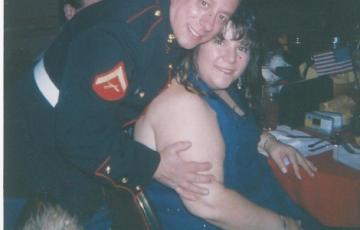
Lisa
I lost my big brother Vincent J. Di Cristo to two forms of cancer on February 14, 2014. He apparently had both high grade B-cell non-Hodgkin lymphoma as well as Burkitt lymphoma. I’m very confused as to how he could have had two different types of cancer because as far as I know, he was always in good health.
Dulcy
I was 18 and had just moved away to go to nursing school, when I was diagnosed with chronic myelogenous leukemia (CML). In 1997, the only treatment option for CML was a stem cell transplant, a far cry from the oral treatment options available today.
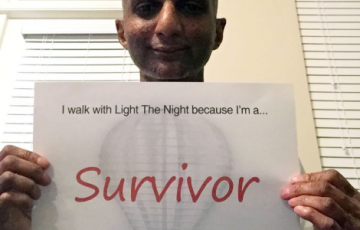
Antonio
In 1985 at four years old I was diagnosed with chronic myeloid leukemia (CML). Luckily, my sister who was two at the time was a bone marrow match so I underwent a bone marrow transplant. The house of chemotherapy and radiation left me nauseas to the point I couldn’t bear the smell food. But thankfully, I was soon in remission.
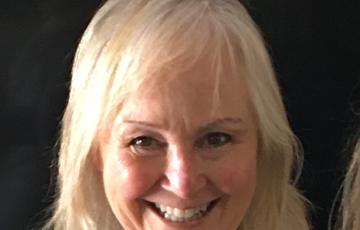
Laura
I was diagnosed with stage 4 mantle cell lymphoma (MCL) in December 2020, but at the time, it was considered to be "indolent." That quickly changed in late February 2021 when I experienced intussusception, a painful telescoping of the bowel into itself requiring hospitalization. A colonoscopy revealed a 7 cm. mass of the cecum, and the biopsy showed that it was MCL. I was discharged from the hospital with the agreement that I would come back a week later and start chemo/immunotherapy.
Logan
July 3, 2021, was the day that my life changed forever. I had been dealing with odd symptoms for months, and after multiple visits with dismissive practitioners, I finally had the ear of a doctor who believed me. A tumor located in my mediastinum was discovered via a CT scan. This news was devastating. I was due to be married in one month and how could someone who is just beginning her life possibly have something like this happen?
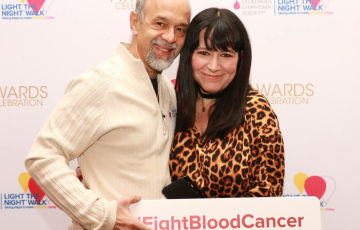
Miguel
In 2017, I found out I had non-Hodgkin lymphoma (NHL). I was always a healthy person who exercised almost daily at the time, so this came as a complete shock. I immediately wanted to start treatment; the sooner the better. My wife did all the research and investigating into where I could find the best treatment as quickly as possible. We were emotionally devastated by the entire ordeal.
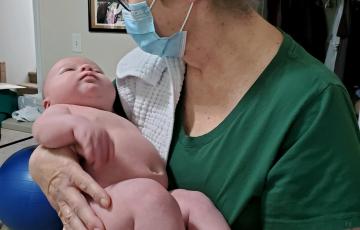
Cheryl
When I first found out that I had multiple myeloma (MM) 4½ years ago, I was shocked. I was in the hospital for a broken leg. I had twisted my leg, and it was badly broken. While I was waiting for surgery, a doctor came into my room and began to talk to me. She explained to me that my leg had broken because I had cancerous bone lesions. As I listened to her, I felt my heart sinking, I had a broken leg, not cancer. It didn't seem possible. Cancer was the last thing I would have imagined. I went through radiation, chemo, and cell replacement therapy.

James
Cancer ― the “C” word ― has a way of reshaping one’s perspective in profound and unexpected ways. For me, my cancer was leukemia. At first, it was catastrophic as I learned how to accept this new reality. It was unfamiliar territory and didn’t come with instructions. I began chemo with clear uncertainty of what would come of it. But now, looking back, that experience wasn’t what you might think.
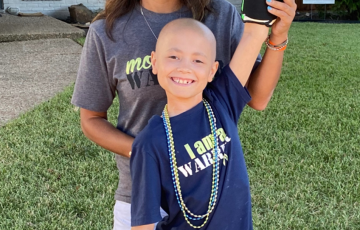
Peyton
My son, Peyton, was diagnosed with non-Hodgkin lymphoma (NHL) in 2021 when he was just eight years old. I nearly dropped to the ground in devastation when I heard the words, "Your child has cancer." As a parent, I wanted to fix it. I wanted to make things better but did not know how. We just knew that we were going to fight and learn as much as we could to beat this.
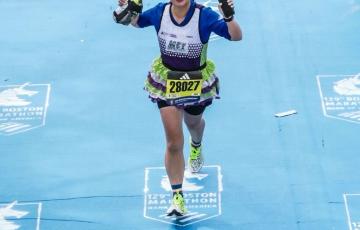
Shirley
The Boston Marathon marked my 33rd fundraiser for The Leukemia & Lymphoma Society (LLS), the 27th race with Team In Training (TNT), and the 6th Abbott World Marathon Major. With the support of amazing friends, teammates, and colleagues, I reached a lifelong goal—raising over $126,200 for LLS personally and over $1.6 million with the incredible teams I’ve been part of throughout the years, such as Team Child and Dynamite Runners.Inspired by my best friend, Christy, who donated her bone marrow to save her sister's life, I joined LLS as an intern in 2017.

Gerardo (Jerry)
I came into this world with a 65,000-mile warranty. During all my life, maybe I had a cold once in a while, some minor stuff, a bit of bursitis, but nothing that you would consider life-threatening at all. One day during a routine exam, I had blood work done. My PCP told me she didn't like my white blood cell count, and it was best to have a specialist look at it. She referred me to an oncologist. I didn’t think of it much, and since I was feeling fine, I thought it must be nothing of consequence.
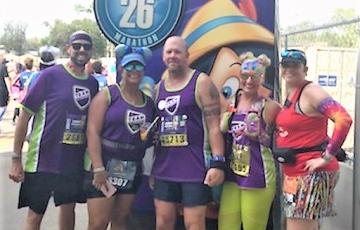
Ron
This started 11 years ago when my mom was first diagnosed with lymphoma. I wanted to do more and saw the purple team always out running events I was entered into. I wanted to join and did in 2010. I have run in countless events over the years with Team In Training (TNT). Then my mom passed in May of 2017 while I was training for the Walt Disney World event. I was crushed and continued to run in her honor. My mom was supposed to be at the finish line at my 2018 Walt Disney World Marathon Weekend, and it did not happen.

Allie
When I was in fourth grade in 2015, my older brother Nate (a freshman in high school at the time) was rushed by ambulance to the U of M Masonic Children’s Hospital. His spleen was holding 10 times the normal amount of red blood cells. This led to the discovery of his cancer. He was later diagnosed with chronic myeloid leukemia (CML). He missed out on the first month of high school and hockey season, but he was able to take medicines at home so that he could eventually attend the rest of the school year.

Ashley
It started in September of 2020, the start of this new journey in life called acute myeloid leukemia (AML). September 13th was the day that something needed to change. Something was just not right. She just was not herself and couldn’t figure out what was wrong. She knew it was time as a doctor told her to get to the hospital to get some fluids. Fluids were not what was needed, but in hindsight, fluids were just what was needed to find out what the root cause of the problem was. After hours of tests, life changed.
Hodgkin Lymphoma Staging
Doctors use physical examinations, imaging tests, blood test and, sometimes, bone marrow tests to determine the extent of the disease. This determination is called "staging." Staging provides important information for treatment planning.
Staging for Hodgkin lymphoma is based on the Lugano classification, which is derived from the Ann Arbor staging system.
Signs and Symptoms
In the early stages of myeloma, some patients have no signs or symptoms of the disease. It is sometimes detected before symptoms appear, when results of laboratory tests done as part of a routine medical examination show abnormalities in the blood and/or urine. When symptoms are present, the most common ones are bone pain and fatigue.
Signs of MyelomaDoctors sometimes refer to the acronym, CRAB, to describe signs of myeloma. The letters stand for
Dental Health
Dental care is an important part of overall cancer care. Good nutrition also plays a big role in dental health. Problems with the teeth, gums or mouth can interfere with eating well. Poor nutrition can lead to dental problems.
Visit the dentist at least four weeks before treatment begins if possible, and
Dan
My name is Dan. I was first diagnosed with multiple myeloma (MM). After a battery of excruciating, painful biopsies and bloodwork, my doctors prescribed chemotherapy and Velcade once a week, then twice a month. My myeloma numbers were going way down, and my platelet count was diving straight to the bottom, single digits. My routine appointments with my doctor not in my city were going south. The doctor told me to stop taking all my cancer medications. What was happening to me was my MM was completely going into leukemia, a disease called myelodysplastic syndrome (MDS).
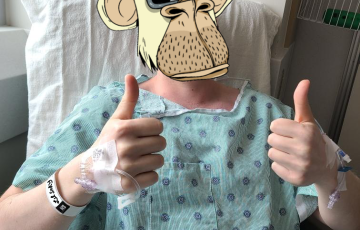
Daniel (Lil Sicky)
Cancel blood cancer with web3! Daniel is a 27-year-old lymphoma patient who combined his medical diagnosis and love of digital art into an NFT project supporting The Leukemia & Lymphoma (LLS) patients and their families.
In November 2021, Daniel was diagnosed with stage three nodular sclerosing Hodgkin lymphoma (NSHL). Like so many others during the COVID-19 pandemic, he has been isolated to protect his health and has been unable to work.

Christen
Originally from northern New York, Christen moved to Denver, Colorado, in 2015 after completing her Bachelor of Science of Nursing at Le Moyne College to pursue a career in cancer care. Through a close relationship with her grandparents, she saw how her grandma, a retired registered nurse, graciously cared for her grandpa while he lived with esophageal cancer for close to a decade. The unwavering love, dedication, and courage they shared inspired Christen to seek out a specialty that allowed her to provide compassionate, holistic care to those in need.
Holly
I noticed a bulge on my lower abdomen in December 2022. I had a negative ultrasound and CT. What was initially believed to possibly be a lipoma (benign tumor of fat) was later biopsied, and by May 2023, I was diagnosed with subcutaneous panniculitis-like T-cell lymphoma (SPTCL). It was a rare form of cutaneous lymphoma. I was young, active, and healthy, so I thought.

Olivia
I'm officially nine months in remission and just celebrated my first birthday (27!) since finishing chemotherapy treatment. In January 2022, I was diagnosed with stage IVB Hodgkin lymphoma (HL) after taking almost nine months to officially be diagnosed. Unfortunately, delayed diagnoses are often the frustrating truth for many adolescent and young adult cancer patients. However, during those nine months, I learned invaluable lessons on how to advocate for myself and persevere until I had answers.
